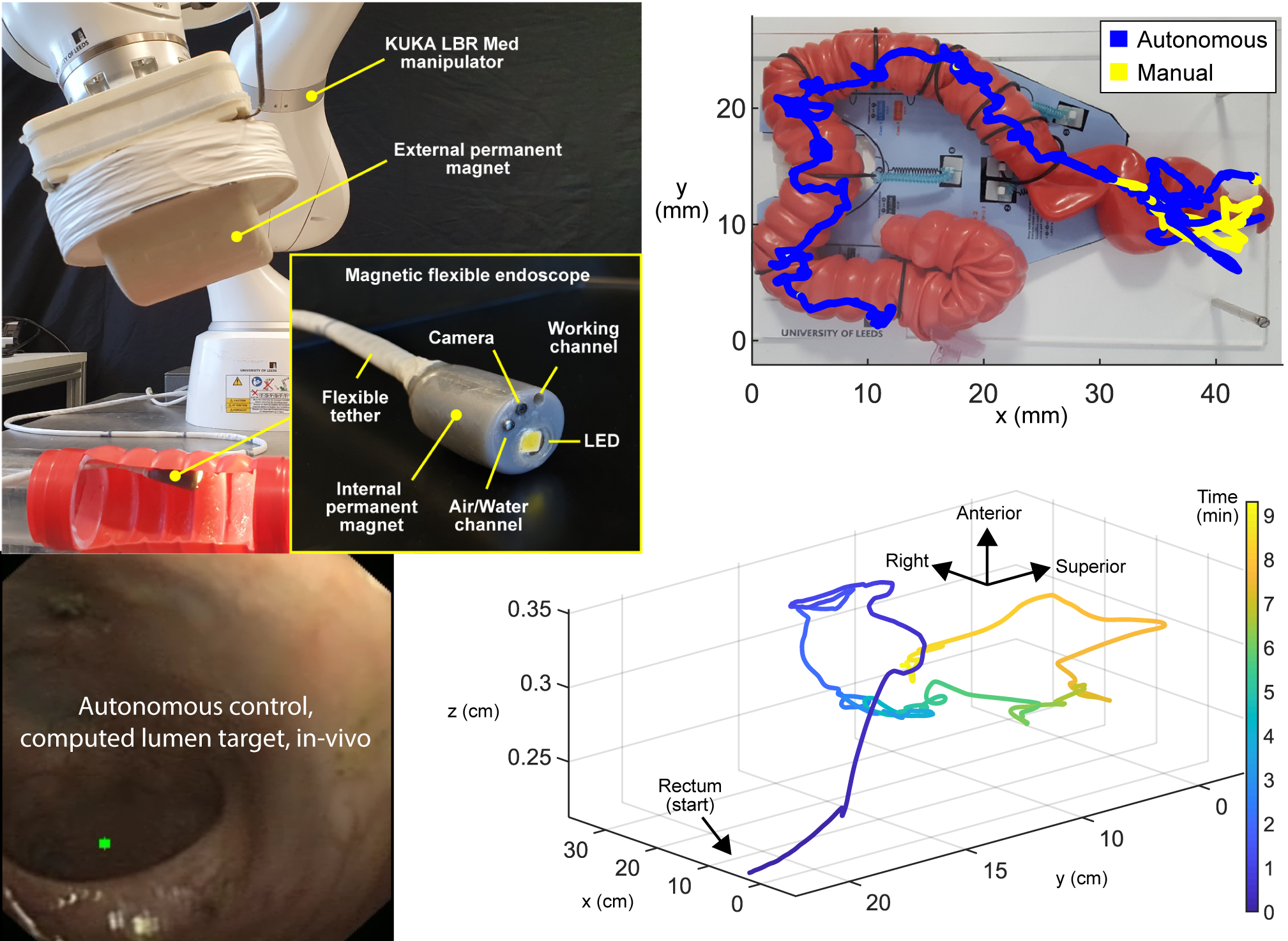
The magnetic flexible endoscope team have just published their latest work entitled ‘Enabling the future of colonoscopy with intelligent and autonomous magnetic manipulation’ – the culmination of 12 years of research by an international team of scientists led by the University of Leeds. The research has been published in the scientific journal Nature Machine Intelligence (https://www.nature.com/articles/s42256-020-00231-9) and reported in The Times, New Scientist and The Daily Mail.
Our system has been developed to reduce the pain and discomfort associated with colonoscopy, an important component in the move to make colonoscopy more widely available – essential if colorectal cancer is to be identified early. To achieve this, our system uses a magnetic, capsule-shaped device which is connected to a highly flexible tether. The device is then guided through the colon, not by the doctor or nurse pushing (the main source of pain), but by a magnet on a robotic arm positioned over the patient. This magnet on the outside of the patient then interacts with the capsule inside the body, navigating it through the colon.
For this latest work, we have developed and compare the performance of increased levels of intelligent and autonomous control for guiding the magnetic endoscope. These levels are:
- Direct robot control. This is where the operator has direct control of the robot via a joystick. In this case, there is no assistance.
- Intelligent teleoperation. The operator focuses on where they want the capsule to be in the colon, leaving the robotic system to calculate the movements of the robotic arm necessary to get the capsule into place.
- Semi-autonomous navigation. The robotic system autonomously navigates the capsule through the colon, using computer vision – although this can be overridden by the operator.
Benchtop and porcine in-vivo trials showed that the introduction of more intelligent control strategies reduced procedure times, made the system easier for the user to control, allowed the device to more consistently reach the end of the large colon, and enabled a large portion of the colon to be autonomously navigated.
These techniques developed to conduct colonoscopy examinations could be applied to other endoscopic devices, such as those used to inspect the upper digestive tract or lungs.
With these results, we hope that robotic colonoscopy can increase the number of providers who are able to perform the procedure and allow for greater patient access to colonoscopy. We are currently aiming to perform patient trials using the system, beginning next year or in early 2022.
